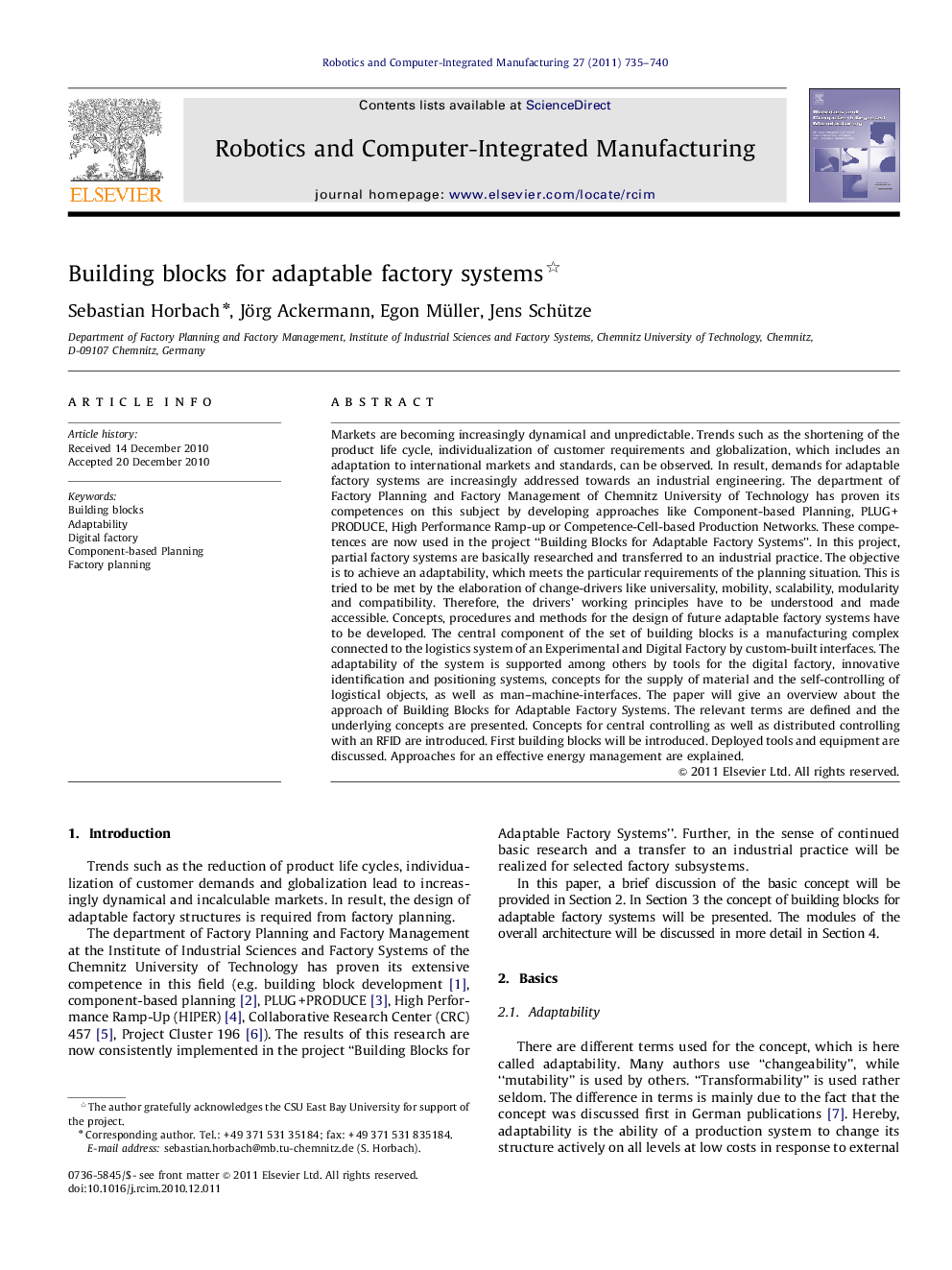| Article ID | Journal | Published Year | Pages | File Type |
|---|---|---|---|---|
| 413688 | Robotics and Computer-Integrated Manufacturing | 2011 | 6 Pages |
Markets are becoming increasingly dynamical and unpredictable. Trends such as the shortening of the product life cycle, individualization of customer requirements and globalization, which includes an adaptation to international markets and standards, can be observed. In result, demands for adaptable factory systems are increasingly addressed towards an industrial engineering. The department of Factory Planning and Factory Management of Chemnitz University of Technology has proven its competences on this subject by developing approaches like Component-based Planning, PLUG+PRODUCE, High Performance Ramp-up or Competence-Cell-based Production Networks. These competences are now used in the project “Building Blocks for Adaptable Factory Systems”. In this project, partial factory systems are basically researched and transferred to an industrial practice. The objective is to achieve an adaptability, which meets the particular requirements of the planning situation. This is tried to be met by the elaboration of change-drivers like universality, mobility, scalability, modularity and compatibility. Therefore, the drivers' working principles have to be understood and made accessible. Concepts, procedures and methods for the design of future adaptable factory systems have to be developed. The central component of the set of building blocks is a manufacturing complex connected to the logistics system of an Experimental and Digital Factory by custom-built interfaces. The adaptability of the system is supported among others by tools for the digital factory, innovative identification and positioning systems, concepts for the supply of material and the self-controlling of logistical objects, as well as man–machine-interfaces. The paper will give an overview about the approach of Building Blocks for Adaptable Factory Systems. The relevant terms are defined and the underlying concepts are presented. Concepts for central controlling as well as distributed controlling with an RFID are introduced. First building blocks will be introduced. Deployed tools and equipment are discussed. Approaches for an effective energy management are explained.
